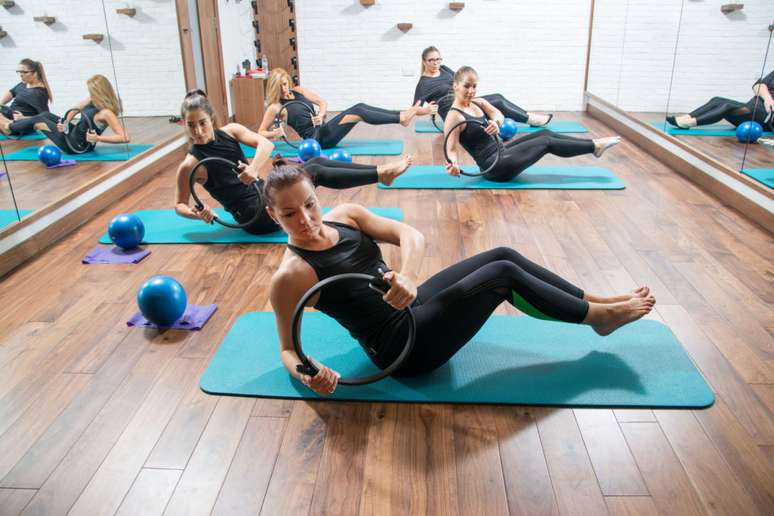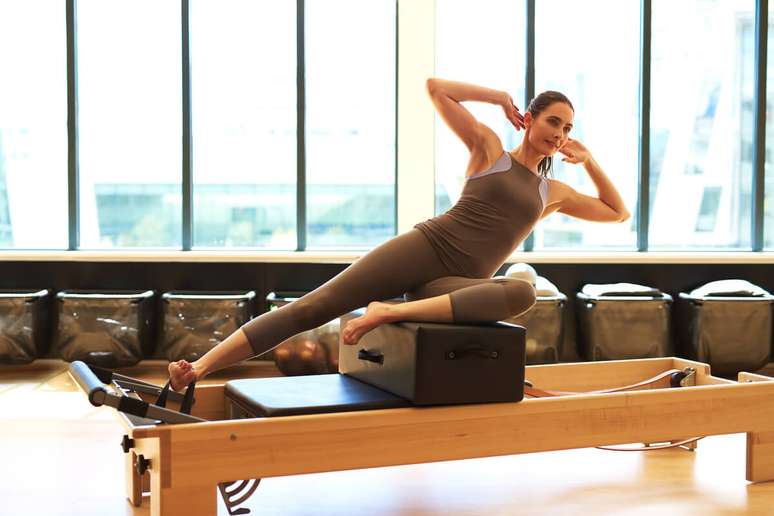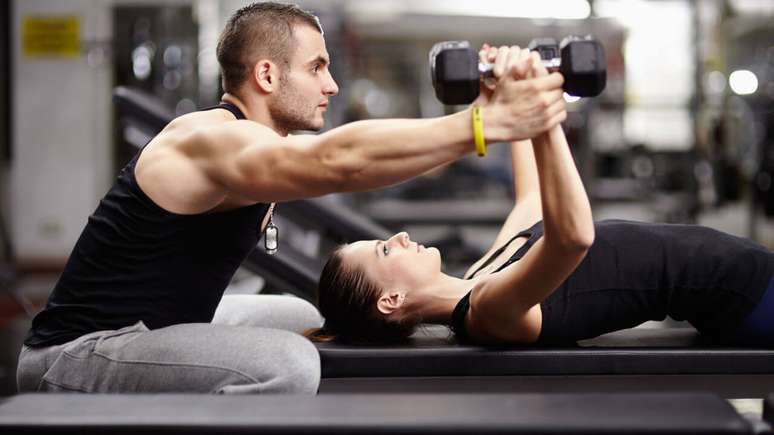The physical activity carried out on the ground or on the equipment contributes to physical and mental health
Created by the German Joseph Hubertus Pilates (1883-1967) around 1900, Pilates offers many benefits to the body and mind, meeting a very distinct audience, such as athletes, dancers, elderly women, pregnant and rehabilitation people. A review of the studies published on the Brazilian Journal of Physical Activity and Health Show, for example, that the classes are able to study the elderly balance, something fundamental to avoid falls and injuries.
According to the physiotherapist Ana Luisa Marçal, Pilates is “a Exercise set which are performed on the ground or on the exclusive equipment. The practice aims at total and complete control and the connection between body and mind, return and restoration of the health of individuals in pathological conditions. “
In addition, according to the professional, practice also helps to promote the quality of life for healthy people, improves posture, contributes to greater joint mobility, relieves tensions, among other benefits.
Below, the physiotherapist Ana Luísa Marçal answers some of the recurring questions about the pilates. Check!
1. Pilates is not suitable for those who want to lose weight?
According to the expert, as an exercise involved, the Pilates practice will promote the combustion of calories, but this is not the main objective of the method. “Pilates’ focus is the toning of the muscles. But, depending on the movements performed, that is, according to some variables, such as the intensity of the exercises and the metabolism of the patient, for example, practice It can encourage weight loss. However, for those who want to lose weight, the Pilates Association is always indicated with aerobic activities, such as walking and a balanced diet, “he says.
2. Can I practice the Pilates group?
Pilates involves the need for extreme concentration. When performing the movements, the student must remain concentrated on himself, not on the space that surrounds him. When the method is practiced by many people at the same time, it is much easier for the individual to disperse attention.
In addition, by guiding many students at the same time, the professional escort cannot provide a more personalized service, based on individual needs and limits, which is essential for the guarantee of Effective results and insurance with the Pilates practice. “Therefore, the most suitable is that Pilates is practiced at most two patients simultaneously in a study and not in a group with many people,” says Ana Luisa Marçal.

3. What is Pilates’ advantage for those who suffer from depression?
Depression is considered a disease that involves chemical changes in the individual’s brain. Exercise is able to improve the connections of the brain And regulates all neurotransmitters, thus regulating brain chemistry as a whole. The presence of hormones is normalized, as in the case of serotonin, which regulates mood, endorphin, which increases well -being and adrenaline, linked to emotion.
“Pilates is a technique that makes the body and mind together and has a various repertoire of exercises that do not stimulate physical wear, generating well -being for the practitioner and contributing to various benefits to patients with depressive symptoms,” says the physiotherapist.
4. Is it true that Pilates helps grow?
In fact, the method provides adequate correction of posture. Postural improvement causes the patient to position himself correctly, taking on a height that seems to be greater than the height that had previously been maintained.
Therefore, those who practice Pilates have the feeling that a few centimeters grew, but in reality they were the exercises that promoted a elongation and awareness of the correct postural habits.
5. Yoga and pilates work the same way?
Those looking for Pilates are usually, in the main purpose of maintaining their body healthy, as well as a better physical form, since the technique cultivates the strengthening of the body and muscle definition, while yoga is ideal for those who seek, in particular a sense of well -being, balance and peace.
For pain with pain, especially on the back or that is about to recover any injury, Pilates is an excellent option as it brings together specific exercises that can benefit from the treatment. Pilates and Yoga guarantee numerous advantages for the quality of life of the practitioner, but everyone works in a different and very specific way.
“Elected which one activity It is better for you is a personal task, because the concept of the best is closely linked to goals and goals. Therefore, the choice must correspond to its focus, “says Ana Luisa Marçal.
6. Can Pilates damage and knees?
When the exercises are not practiced correctly, the back and knees are regions of the body that can be easily injured. Therefore, according to Ana Luísa Marçal, first of all, we must strengthen the muscles that stabilize these joints. “We call deep muscles. Even in the case of the back, it is necessary to work mobility and knees, respect the protection of the protection of the patella,” he concludes.
Ana Luisa Marçal
Physiotherapist. It has formation in Pilates as a soloist and spinal pathologies and the segmental stabilization column, as well as the specialization in neurofunctional physiotherapy by the brotherhood of Santa Casa de Misericrdia of St. Paul.
By Julia Vittorazzo
Source: Terra
Ben Stock is a lifestyle journalist and author at Gossipify. He writes about topics such as health, wellness, travel, food and home decor. He provides practical advice and inspiration to improve well-being, keeps readers up to date with latest lifestyle news and trends, known for his engaging writing style, in-depth analysis and unique perspectives.








